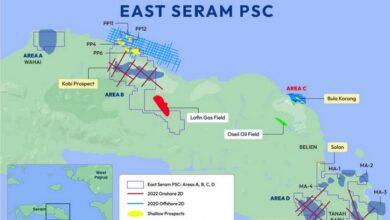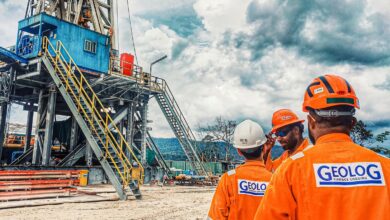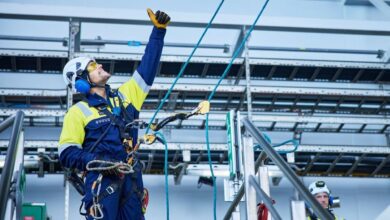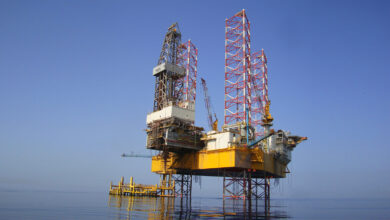Nabors to base all future land rigs on Minimum Area AC rig concept
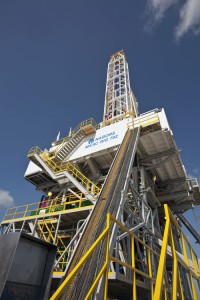
Rig 702, Nabors International’s newest state-of-the-art modular land rig designed for today’s complex and environmentally challenging drilling environments, is being deployed in September to Papua New Guinea (PNG) for a 14-well project for ExxonMobil.
The Minimum Area AC (MAAC) rig will serve as the basis for all future land rigs designed by Nabors, said Padira Reddy, senior vice president of engineering and technical support and designer of the rig. Equipped for managed pressure drilling, the MAAC rig is capable of maintaining constant bottomhole pressure using continuous mud circulating while making drill pipe connections.
“The features of this rig are especially suited to the difficult conditions in PNG, including the 10,000-ft altitude, massive rainfall and strict environmental and safety regulations,” Mr Reddy said. The compact rig can move quickly from well to well and rotates at one point, making it ideal for small or tight locations.
Depending on local road conditions, the rig is expected to begin working in January. “Rig 702 is designed using concepts typically seen for offshore rigs,” Mr Reddy said, whose design experience is primarily in the offshore segment. “Most locations today are difficult or harsh, and everyone in the industry wants compact rigs that offer these features.”
In response to PNG’s stringent environmental regulations, the rig includes features that will minimize both lighting and sound impacts to residents living in proximity to the well site, Mr Reddy noted.
With its modular design, Rig 702 can be broken down into small 20-ton loads to accommodate remote road conditions and local regulations. The 1 million-lb vertical erecting type mast has a built-in top drive rail and assist structure and can accommodate strict seismic criteria. The box-on-box feature, similar to that on rigs currently working for Nabors in Colombia, has a 44-ft drill floor height with 38-ft clearance below the rotary beams. Drawworks controlled by Canrig’s DrillSmart system provide greater control for ROP, torque, pressure differential and weight on bit.
The rig floor was rotated 90° from conventional placement, a feature that enhances safety because it relocates the catwalk away from the well heads, he noted. The rig can navigate easily over existing wells and around simultaneous production operations on adjacent wells.
Rig 702’s technology is aimed at increasing efficiency and reducing time. For example, the design features Canrig’s rig monitoring system, RigWatch, that allows well-site personnel to gain real-time access to data by consolidating all third-party information, including measuring while drilling, logging while drilling, mud logging and wireline.
The rig’s substructure can integrate systems for primary mud-processing, blowout prevention and well control, and includes a built-in rig-moving system. The integrated design eliminates the need to lay down drill pipe and a bottomhole assembly, or rig down the mast and substructure when skidding to the next well.
The mud system can accommodate 22-ppg mud and includes a self-cleaning system for all of the mud pits, which are fully enclosed and cylindrical in shape, therefore eliminating dead space. “In light of the region’s exceptionally rainy climate, Rig 702 was built to capture all contaminated rainwater run-off, providing a zero-discharge system under the floor and around the rig site,” Mr Reddy noted.
Rig 703, a sister rig to the 702, is still under construction and also will be deployed to PNG.

